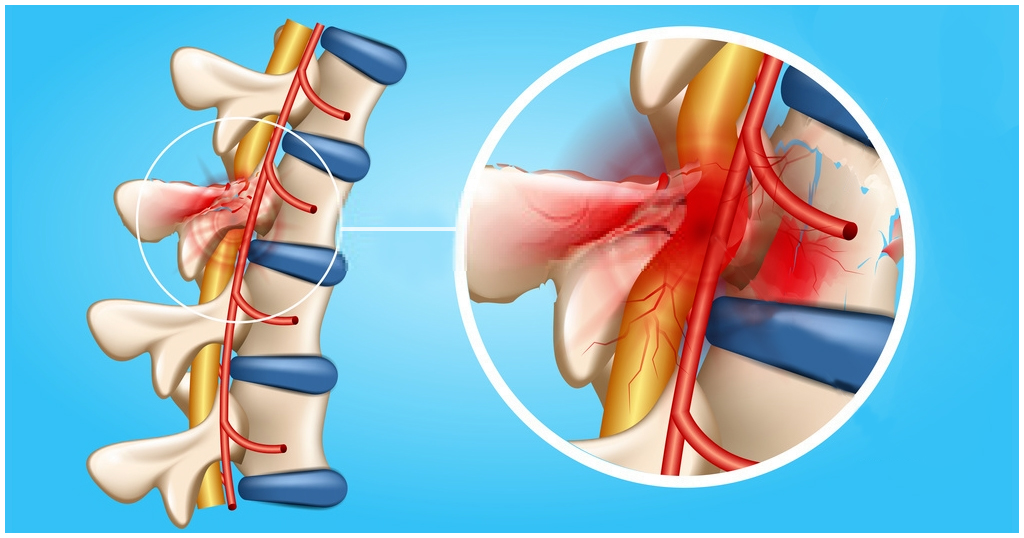Spinal Cord Injury


Spinal cord injury can be one of the most perilous injuries that can happen to a person. Depending upon its location and completeness, spinal cord injury may lead to paralysis and can even be life-threatening. Injuries in the cervical spine of the spinal cord are the most severe and can lead to complete tetraplegia. Tetraplegia, also called quadriplegia, is paralysis caused by injury or disease that results in partial or total loss of use of all four limbs including the torso.
What is a Spinal Cord?
The spinal cord is the most important and integral part of the brain and the central nervous system. It is a bunch of nerves, which extends from the medulla oblongata (a long stem-like structure located in the brainstem) and is entrenched around by the vertebrae, stacked one above the other, forming the backbone. The spinal cord, responsible for transmitting impulses to and from the brain, begins at the occipital bone (the back and base of the skull) and goes all the way down to a region between the first and second lumbar vertebrae.
The spine is responsible for a variety functions including movements, controls and stimuli – the perception of pain, ability to move, and control of bodily functions. Therefore, any injury to the spine can have both immediate and long term effects on an individual. Typically, any severe injury will cause loss of mobility and sensation downwards from the point of injury on the spine.
The most common cause of all spinal injuries would be sudden events and trauma
- Accidents and/or violent attacks.
- Electrical shocks,
- Vehicle accidents
- Sports injuries of the neck and head, etc.
Some of the common signs and symptoms of a spinal injury include:
- Inability to walk congruently
- Loss of bladder and/or bowel movements
- Loss or altered sensation, such as the ability to feel touch, heat and cold
- Numbness and tingling sensation in the extremities
- Headaches and pain in the neck or stiffness
- Difficulty breathing or coughing
- Immobility of arms and legs
One can take a few precautions to prevent spinal injury. This can, if not preventing the injury, may help alleviate some of the after effects. In case of an accident or trauma, it is important to call the nearest emergency provider to stabilize a patient and administer the initial treatment. However, the following are some general tips to prevent spinal cord injuries.
General Prevention for Spinal Cord Injuries
- Keep your home clean. Most of the slips and falls happen often at home. Keep the floor clear of any hazards that may lead to a fall. This is very important for the elderly as any fall can be more upsetting for them. Handrails or staircases can improve safety at home.
- Always wear a seatbelt when driving a motor vehicle or wear a helmet (including pillion rider) while riding in a motorcycle. This is most important for children. Ensure that child safety restraint are installed properly in the motor vehicle.
- Obey all traffic rules and follow all traffic signs while riding a bike. And, do not wear headphones.
- Pay close attention to the road while driving. Avoid distractions like texting and/or phone calls while driving.
- Do not drive under the influence of drugs or alcohol or ride with anyone who has.
- Finally, never try to move anyone with suspected spinal cord injury. Call your local emergency healthcare provider. Let the emergency professionals evaluate the injured individual. Moving a person with a spinal cord injury may damage the spinal cord further.
Sports Safety
- Always wear a helmet, including all other suggested safety equipment. Safety equipment given to sports persons during the play or practice is an important aspect in preventing injuries, including spinal cord injuries. Also, it is very important to replace damaged or worn protective gear/equipment.
- Avoid extreme sports like sky-diving, bungee jumping, and base-jumping, etc. They can be very dangerous.
Playground Safety for Children
- Small children have to be supervised all times. Children usually like to climb. So, a fall from even a few feet height can lead to a spinal cord injury
- Check the playground equipment. Ensure it is intact and in good condition before letting children play.
- Trampolines can be fun, but this may also lead to serious injury including spine injury. Monitor and supervise children while jumping to make sure they are jumping safely
Swimming Pool Safety
- Always ensure that there is enough water while diving into a pool, so you do not hit the bottom of the pool. It is always better not to dive into water that is less than 10 to 12 feet deep
- Ensure that the area surrounding a pool clear of hazards and is also well lit
- Avoid pushing anyone into a swimming pool. This may lead to a serious injury including spinal cord injury
Outlook
Consequences of a spinal injury can be both immediate as well as lifetime. While many patients recover completely from spinal injuries, a few may have to deal with the consequences over a much longer time or even a lifetime. Loss of mobility may require patients to use the assistance of a walker; in extreme cases, they become paralyzed downwards from the neck.
© Copyright 2024. Apollo Hospitals Group. All Rights Reserved.
 +91 8069991061
Book Health Check-up
Book Health Check-up
Book Appointment
Book Appointment
+91 8069991061
Book Health Check-up
Book Health Check-up
Book Appointment
Book Appointment




